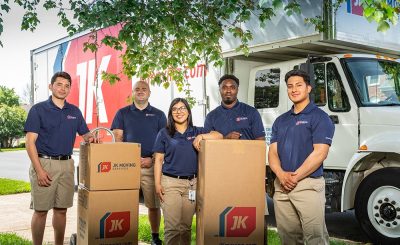Whether it’s a fast-moving remodel on Boughton Road or a whole-home purge before winter, Bolingbrook Dumpster Rental services keep projects clean, safe, and on schedule. The right container, delivered where and when it’s needed, saves labor, reduces hazards, and helps meet local rules. This overview breaks down sizes, scheduling for seasonal cleanouts, placement considerations, and practical coordination tips tailored to Bolingbrook’s neighborhoods and busy building calendar.
The role of dumpsters in construction site efficiency
A properly sized dumpster is a quiet force multiplier on a build. When crews don’t have to pile debris in a corner or make multiple runs to the transfer station, they stay on task. That’s especially true on tight Bolingbrook lots where staging space is limited and neighbors are close.
Here’s how a well-planned container boosts efficiency:
- Streamlined workflow: Crews toss debris once. No double handling, no end-of-day scramble. For framing, roofing, and demo phases, that can reclaim hours each week.
- Safety and compliance: Loose nails, drywall shards, and offcuts are injury risks. Consolidating into a container reduces trip hazards and keeps walkways and drive lanes clear for inspections.
- Cost control: Overfilled or undersized containers cause extra hauls and fees. Matching size to scope keeps disposal predictable, which matters when margins are tight.
- Material separation: On some projects, a dedicated container for clean concrete or scrap metal can reduce disposal costs. Ask the hauler about reduced rates for “clean loads.”
Access planning is part of efficiency too. Roll-off trucks need clear approach and turning space, generally 60–80 feet of straight access. On cul-de-sacs and townhouse drives common in Bolingbrook, mark the drop zone, move vehicles the night before, and protect the driveway with plywood if desired. Small touches keep delivery quick and the schedule intact.
Dumpster size options available for Bolingbrook residents
Bolingbrook dumpster rental options usually span from compact 10-yard bins to large 30–40 yard roll-offs. Picking the right size avoids overage charges and swap-out delays.
Typical sizes and uses:
- 10-yard (about 12′ x 7′ x 3.5′): Good for small bath remodels, flooring tear-outs, or clearing out a single room. Often includes 1.5–2 tons of disposal weight.
- 15-yard (about 16′ x 7.5′ x 4′): A flexible option for condo or townhouse projects where space is tight but debris adds up, kitchens, small roofing jobs, or garage cleanouts.
- 20-yard (about 22′ x 7.5′ x 4.5′): The most popular homeowner size. Handles mid-size remodels, basement or attic cleanouts, and many roofing jobs (roughly 25–30 squares of asphalt shingles, depending on layers and underlayment).
- 30-yard (about 22′ x 7.5′ x 6′): For major renovations, multi-room demos, or new construction. The higher walls are efficient for bulky, lighter materials like drywall and framing lumber.
- 40-yard (where available): Suited for commercial cleanouts or large-scale construction with plenty of onsite room.
A few sizing pointers:
- Weights matter: Drywall, shingles, plaster, and concrete get heavy fast. If the project is “dense” debris, a 20-yard might beat a 30-yard to avoid weight overages.
- Driveway fit: Many suburban driveways fit a 20- or 30-yard. Narrow drives, shared access, or HOA rules may favor a 10- or 15-yard.
- Mixed vs. clean loads: Ask about separate pricing for clean concrete, brick, or dirt. A smaller, dedicated bin for masonry can lower total costs.
Before booking, review the provider’s size chart and weight limits, ideally with photos of your drop spot. If available, View all size options and included tonnage so you’re not guessing mid-project.
Seasonal cleanouts and how to schedule rentals effectively
In Bolingbrook, cleanouts often spike in spring and late summer, right when construction picks up. A little lead time keeps things smooth.
Practical scheduling moves:
- Book ahead during peak: In April–June and late August, aim for 5–7 days’ notice. Off-peak most haulers can place within 24–48 hours.
- Weekend game plan: For a Saturday/Sunday cleanout, schedule Friday placement with Monday pickup. Confirm whether the provider offers weekend-flat pricing or daily rates.
- Plan the load path: Stage bulky items (sofas, mattresses, cabinets) closest to the door or garage. The less you carry, the faster the job goes.
- Weather check: Cover the bin with a tarp if rain is forecast. Wet couches and drywall add weight, and weight overages add cost.
- Right-size for the goal: Spring garage purge? A 15- or 20-yard usually fits. Whole-home downsizing before a move may need a 30-yard, or a mid-week swap.
Pro tip: If a summer storm drops branches across Lily Cache or along your fence line, ask about yard-waste rules. Some haulers require separate bins for brush: others allow mixed loads with volume limits.
Local zoning and placement rules to consider
Bolingbrook spans Will and DuPage counties, and while dumpster rental is straightforward, placement rules still apply. The safest bet is always a private driveway, but check these local considerations before delivery:
- Street placement may require a permit: If the container must go on a public street or right-of-way, contact the Village of Bolingbrook (Public Works or Code Enforcement) about permits, placement duration, and any barricade or cone requirements.
- Keep clearances: Don’t block sidewalks, driveways, fire hydrants, or sightlines at intersections. Expect minimum setback requirements and nighttime visibility rules if placed curbside.
- HOA and multifamily rules: Many HOAs restrict size, placement, or duration. Condos/townhomes may need property manager approval and protected surfaces.
- Surface protection: Roll-offs are heavy. Use plywood on asphalt or paver driveways to disperse weight. Avoid sprinkler heads and soft parkway turf.
- Prohibited items: Household chemicals, paint, oils, tires, batteries, propane tanks, and appliances with refrigerants are typically not allowed. Electronics may require separate recycling per Illinois regulations.
- Commercial sites: Larger projects might list containers on site plans or require fencing. Coordinate with the GC to ensure access during inspections.
Because ordinances change, confirm current rules with the Village and your hauler a day or two before delivery. A quick call can prevent a citation or forced relocation mid-project.
Practical tips for coordinating waste pickup and removal
Communication with the hauler is half the battle. The other half is loading smart.
Coordination checklist:
- Provide specifics: Gate codes, best approach street, preferred side of driveway, and a backup contact if you’re offsite.
- Reserve swap-outs early: For fast demo phases, pre-schedule a midweek “swap” so the truck arrives as the bin fills, no idle crew waiting.
- Mind the fill line: Load level with the top rail. Overfilled bins can’t be tarped, and drivers may not haul them for safety reasons.
- Distribute weight: Put heavy debris (tile, shingles, concrete) in first and spread it evenly. It prevents overweight axles and keeps the bin stable.
- Use the walk-in door: Most roll-offs have a rear door. Walk in heavy items instead of heaving them over the side, it’s faster and safer on backs.
- Break down bulky items: Flatten boxes, disassemble furniture, and cut long lumber. You’ll fit more and reduce the chance of overage charges.
- Keep out the no-gos: Separate hazardous or restricted items for proper disposal events. Your hauler can point you to local options.
On pickup day, clear cars and snow/ice from the approach. Roll-off trucks are large: a blocked path can trigger a dry-run fee. A quick five-minute sweep saves an extra trip.








